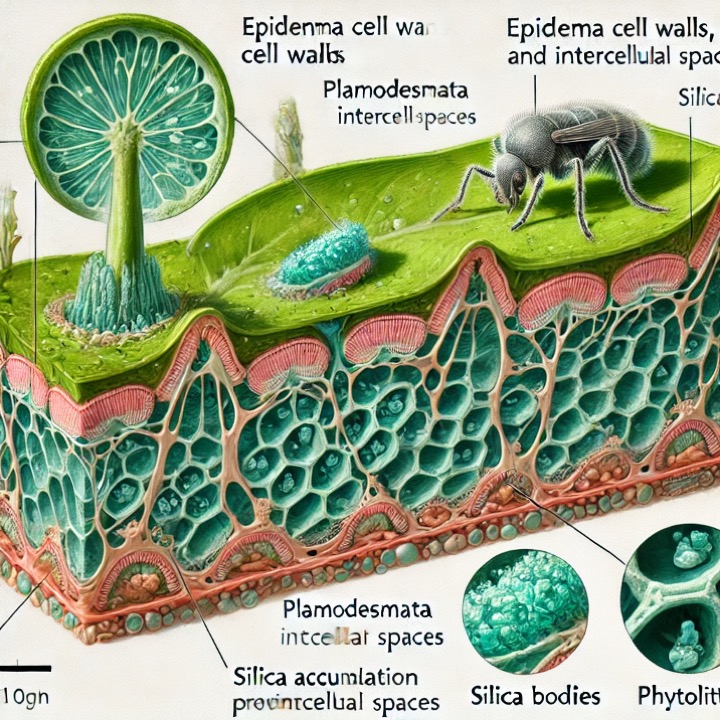
In the natural world, plants have evolved numerous defense mechanisms to protect themselves from pests and pathogens. One such critical defense system is the deposition of Silica in plant cell walls, forming a strong yet flexible barrier. This ‘Silica Wall’ serves as a physical protection layer that prevents pests and pathogens from easily penetrating plant tissues, making it an essential component of plant health and resilience.
Silica primarily accumulates in the epidermal cells, cell walls, and intercellular spaces of plant tissues. Its deposition occurs in specific structures, including:
Silica is absorbed by plants in the form of monosilicic acid, organosilicon, or other available forms and transported to various tissues where it polymerizes into solid structures within the cell walls. This deposition reinforces the structural integrity of the plant, much like steel reinforcement in concrete. The resulting Silica Wall acts as a mechanical barrier that:
One of the most significant advantages of Silica as a defense mechanism is that it does not rely on toxic action against pests or pathogens. Unlike chemical pesticides that pests can develop resistance against over time, Silica works by physically strengthening the plant’s natural defenses. Since this process does not involve killing the pest but instead making the plant harder to attack, pests and pathogens cannot adapt to overcome this defense. This makes Silica a sustainable and long-term solution for crop protection.
For Silica to provide effective protection, it must be available in adequate amounts throughout a plant’s growth cycle. Different plants have different growth rates, and their Silica supplementation needs vary accordingly:
To maximize the benefits of Silica in crop protection, consider the following best practices:
Silica is nature’s own defense mechanism, providing plants with a physical shield against pests and diseases without relying on chemical toxicity. This not only ensures long-term sustainability but also eliminates the risk of pests developing resistance. By ensuring an adequate and timely supply of Silica, farmers can cultivate healthier, stronger, and more resilient crops, ultimately leading to better yields and reduced dependence on pesticides. Whether for vegetables, grains, or trees, Silica is a fundamental pillar in modern, sustainable agriculture.
There was this interesting discussion I had with Mr Prateek
The teaser of Self Running Soil Revolution for an investment
The effectiveness of any microbial product depends not just on
Mitrasena (Army of friends) is global brand of Biowall Agrihealth Pvt Ltd. Mitrasena products & protocols enables seamless transition to non-toxic farming by concurrently offering Excellent Protection, Higher Productivity & Profit and, Ease of use.
We are a DIPP recognized Startup working for non-toxic crop protection. We are driven by a highly passionate and professionally competent team.
MitraSena © 2025 | All rights reserved | Innovatively Designed and Built by Social Mukul Media
Have any query about bulk orders? Get in touch with us.